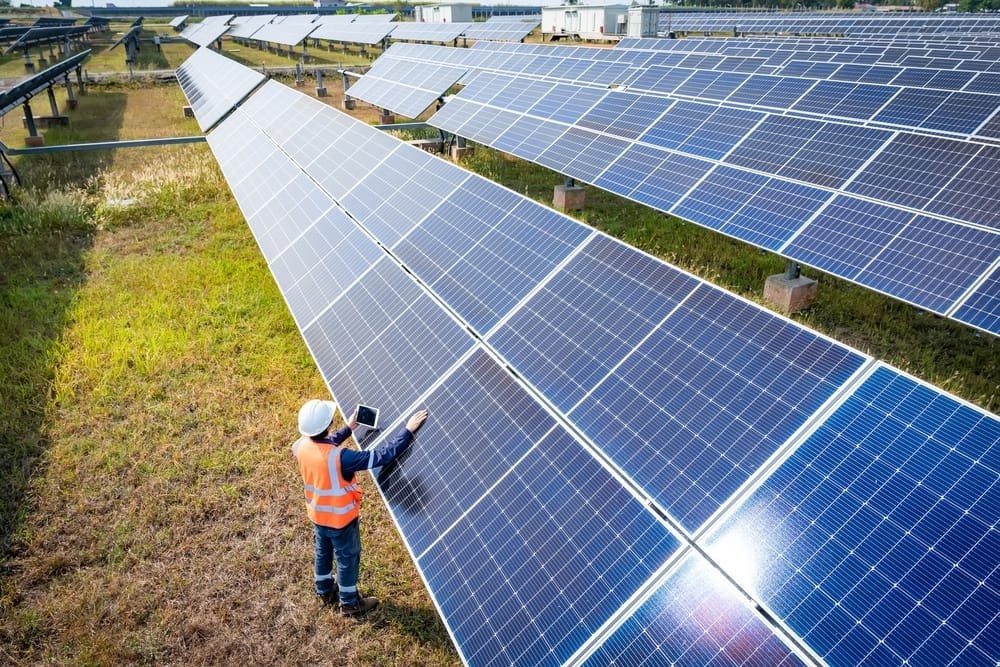Bohol is poised to become a major player in the country’s renewable energy landscape, with the capacity to generate at least 90 megawatts (MW) of sustainable power. This milestone follows the successful securing of a redundancy power system by the provincial government—an infrastructure boost that significantly strengthens the province’s energy resilience.
The system forms part of the National Grid Corporation of the Philippines’ (NGCP) Cebu-Bohol Interconnection Project, which now allows Bohol to draw an additional 230 kilovolts (kV) of electricity. With this strategic link in place, the province can tap into a broader and more stable power supply from the Visayas grid.
(Also read: Yuchengo-Backed Solar Project Gets DOE Nod in Capiz)
Renewable energy hub
Bohol Governor Erico Aristotle Aumentado is actively courting green energy investors to bring in over 100 MW of solar power, aiming to bolster the province’s renewable energy mix alongside its existing hydro capacity.
Sustainable power generation is already embedded in Bohol’s development plan, with support from multiple sources: hydro plants in Loboc, Sevilla, and Balilihan; diesel backup in Dampas; the 128-kV Leyte-Bohol Interconnection; and the 95.2-MW plant in Imelda, Ubay.
Another notable green energy project is the Dagohoy Solar Power Project, the island’s first utility‑scale solar farm. Built by Dagohoy Green Energy Corp. (Yuchengco Group) with the DOE and local LGUs, its 40,000 solar panels produce about 41,000 megawatt-hours (MWh) a year—enough to energize 18,000 homes and key tourism sites.
The Bohol Light Company, the exclusive electric distribution utility serving Tagbilaran City, also took a major step toward clean energy with the launch of an 8-MW solar farm. The facility will rise on a 10-hectare site spanning Tagbilaran City, Libertad, and Baclayon.
Once operational, the ground-mounted facility is expected to produce nearly 17,000 MWh of clean energy each year—enough to power around 7,000 homes. Officials say it will also cut carbon emissions by 15,000 tons annually, equivalent to planting 750 trees.
Additionally, construction began on a 45-MW solar plant in the municipality of Sevilla, ensuring around 90 MW of solar capacity for Bohol.
Governor Aumentado voiced confidence in the province’s energy security, saying it now has a reliable power supply to attract investors and sustain long-term development.
“We can now confidently say that our power supply is stable, thanks to our solar farms and other renewable energy sources providing clean electricity,” he said in Bisaya.
(Also read: Visayas & Mindanao Are Growing Fast—Is the Power Supply Ready?)
Contributing to the nation’s energy goals
The Philippines is ramping up its shift to renewable energy, with solar power gaining traction for its lower cost and consumer benefits. Energy officials say this transition is not just about cleaner sources, but also about delivering affordable electricity across the country.
Currently, green energy makes up 22% of the country’s power mix. According to the Independent Energy Market Operator of the Philippines (IEMOP), that figure is expected to climb to 35% by 2030. This aligns with the Philippine Energy Development Plan, which outlines a gradual phase-out of fossil fuels in favor of more sustainable sources.
Bohol is seen as central to this nationwide shift, with its growing network of renewable energy facilities serving as a model for clean, reliable, and locally generated power.
Sources:
https://pia.gov.ph/bohol-now-has-potential-to-generate-around-90-megawatts-of-sustainable-power
https://cebudailynews.inquirer.net/634541/bohol-8-4-mwac-solar-power-to-boost-investors-confidence


